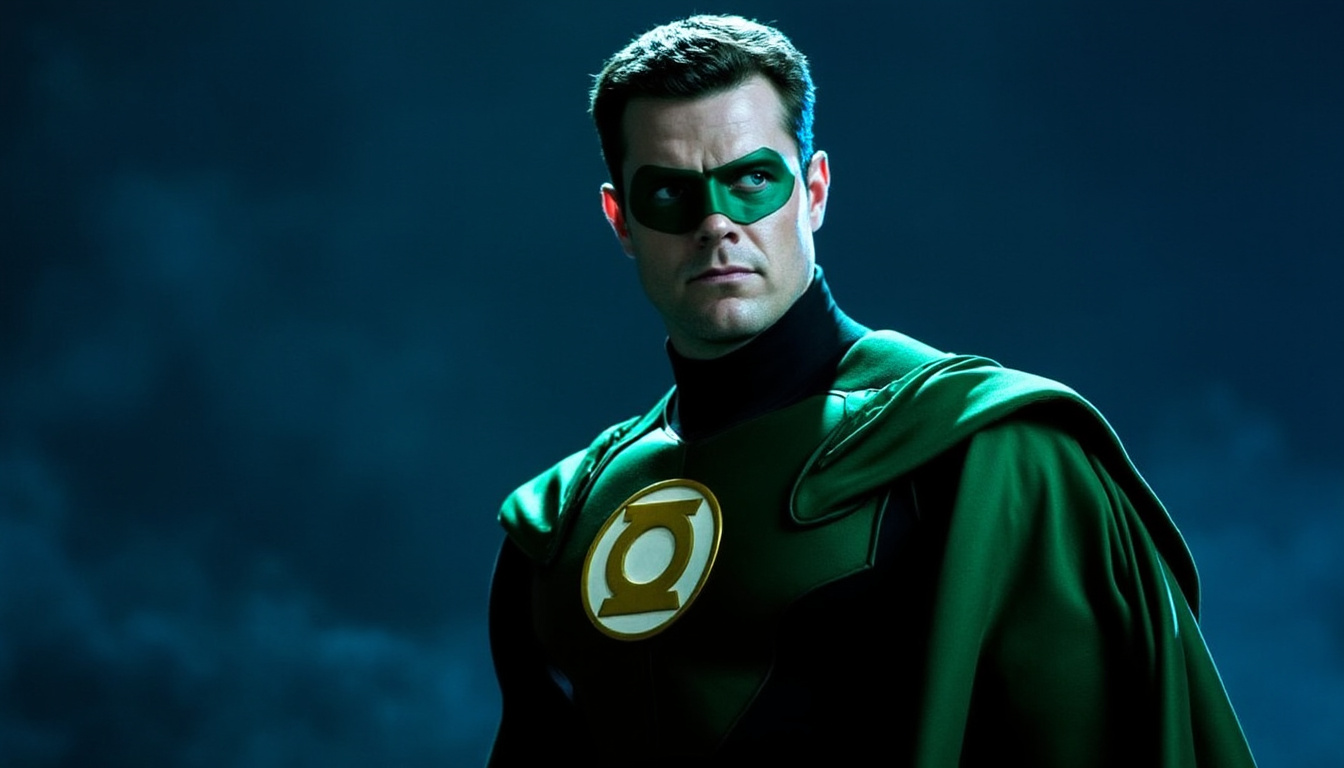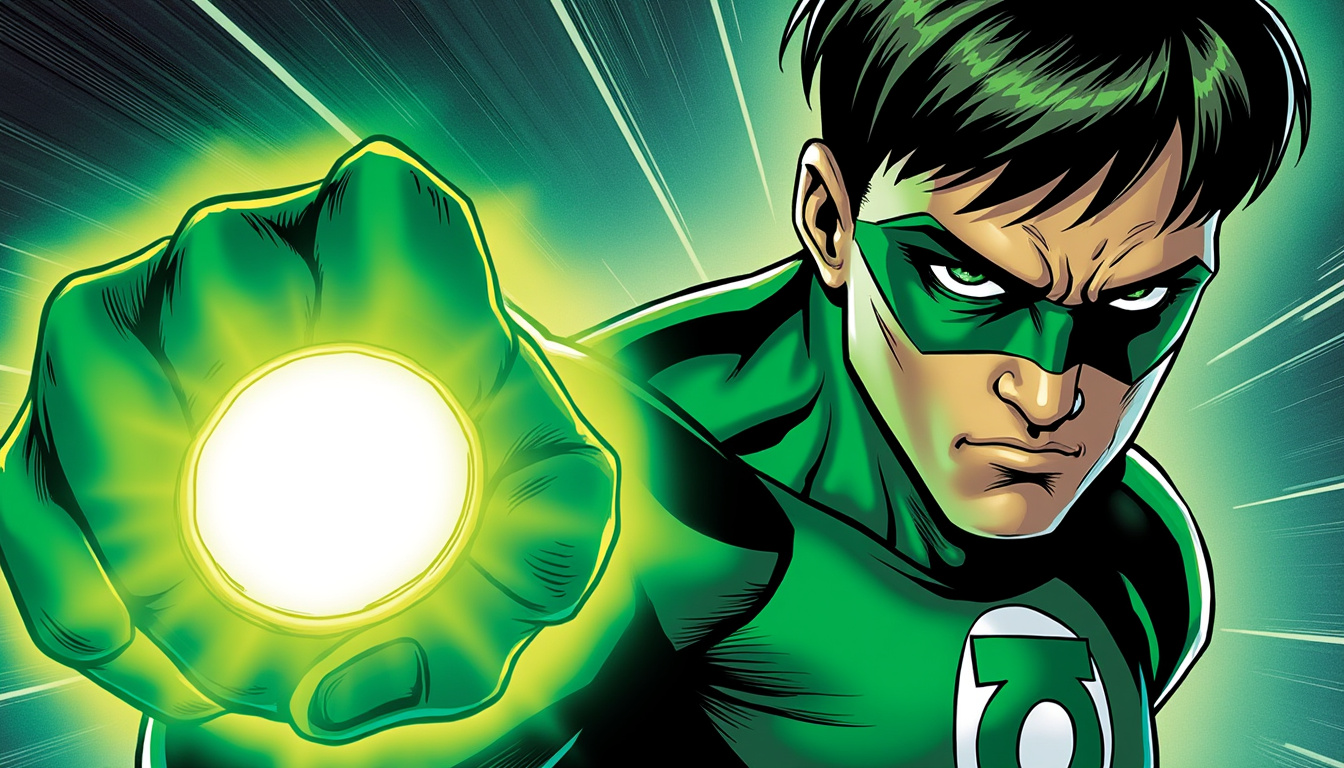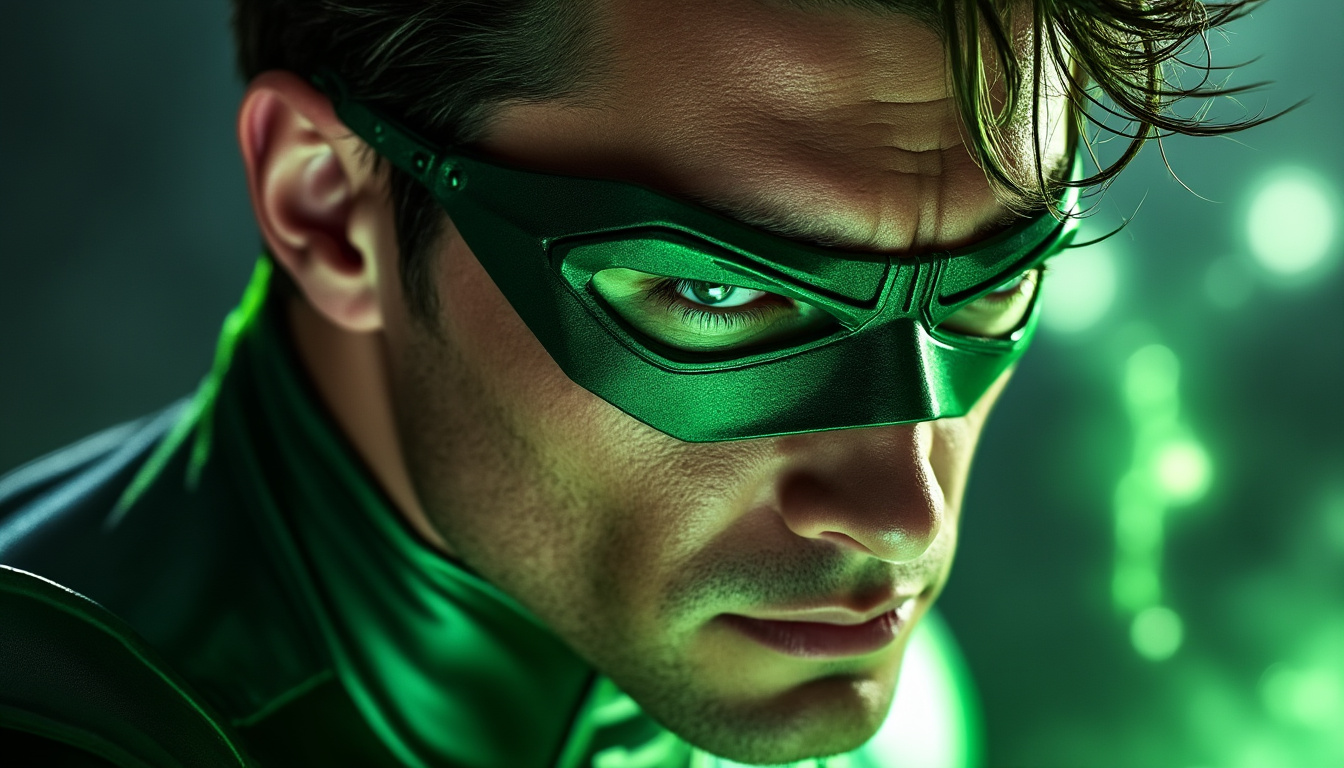The Green Lantern, a character synonymous with heroism and justice, is making waves once again in the DC Universe, particularly regarding a unique aspect of his portrayal: his haircut. Actor Nathan Fillion, who is set to portray Guy Gardner, has brought a fresh perspective to this historical character. Departing from traditional representations, this iteration focuses on the iconic bowl cut, revealing an intriguing intersection of comic book fidelity and modern cinematic vision.
Understanding Guy Gardner’s Haircut and Its Significance
Guy Gardner, one of the notable Green Lanterns, has long been defined not just by his powers but also by his distinctive hairstyles. These have varied throughout different comic book eras, but none has sparked quite as much discussion as the classic bowl cut. In the realm of comic book culture, hairstyles can carry significant meaning, often reflecting the personality and ethos of a character.
The bowl cut itself is emblematic of the 1970s and 1980s aesthetic, a time when Guy Gardner first emerged. It’s a hairstyle that can be seen as a representation of nonconformity, mirroring Gardner’s often brash, rebellious character. Nathan Fillion’s insistence on retaining this cut for his film portrayal acknowledges its roots, demonstrating a commitment to authenticity amidst a landscape of frequent character redesigns.
Fillion has articulated his passion for remaining true to the character, stating, “I was team bowl cut the whole way. It’s canon. It’s set. If we don’t do a bowl cut, we’re going to hear about it.” This vocal commitment highlights a deeper respect for the source material while also inviting discussions on how physical appearance impacts character perception.
The choice of haircut can influence how the audience resonates with the character. Here are some examples of how various adaptations have impacted viewer perceptions:
- Tim Burton’s Batman – The stylized approach diverged from comic book norms, evoking mixed feelings among fans.
- Superman Returns – Brandon Routh’s portrayal included a hairstyle reminiscent of Christopher Reeve, enhancing nostalgic appeals.
- Ben Affleck’s Batman – His grizzly look contrasted sharply with previous interpretations, showcasing how a haircut can define a new era.
Moreover, Fillion’s bowl cut plays into a broader discussion in the entertainment media about the representation of comic book characters in the film. Classic styles open up pathways for nostalgia while also allowing contemporary interpretations to thrive. This conflicting dynamic raises important questions: In what ways do hairstyles contribute to character depth? And how can they bridge the gap between comic origin and modern storytelling?

Comparative Analysis: Green Lantern’s Bowl Cut Versus Other Hairstyles
It’s essential to contextualize Guy Gardner’s bowl cut against other, more varied hairstyles in the DC Universe. Each character’s hair not only reflects their personality but also their journey within the greater narrative tapestry of the comic book world.
| Character | Hairstyle | Significance |
|---|---|---|
| Guy Gardner | Bowl Cut | Symbolizes rebellion and individuality. |
| Hal Jordan | Slicked Back | Exudes professionalism and control. |
| John Stewart | Short and Neat | Portrays discipline and order. |
| Jessica Cruz | Casual Waves | Represents modernity and relatability. |
This table succinctly highlights the various hairstyles across key Green Lantern characters, demonstrating the multifaceted approaches to character design in the DC Universe. The bowl cut, while potentially viewed as a comical choice, encapsulates the essence of Guy Gardner—an unrefined, passionate hero who often operates outside the norms governed by his peers.
Narrative Implications of Hair Design in Superhero Films
The DC Universe has long explored themes of identity and transformation. Haircuts in superhero narratives often serve as symbolic representations of the characters’ journeys. For many heroes, changing hairstyles can signify growth, maturity, or an evolution of ideology. This approach is particularly relevant for characters like Green Lantern.
As audiences, there is an intrinsic connection to the characters we see on screen, and visual cues such as hairstyles are vital in building this relationship. Nathan Fillion’s commitment to the bowl cut nods to a laudable attempt to create a tangible link between viewers and the rich history of comic books.
Here is how different hairstyles have been depicted narratively:
- Transformative Moments – A haircut often marks a turning point for many characters, signifying a new chapter.
- Cultural Reflection – Certain styles resonate with audiences based on current trends, effectively making characters feel more relevant.
- Subversion of Tropes – Some characters may intentionally sport unconventional styles to challenge standard hero archetypes.
The evolution of the superhero narrative dives deeper into societal expectations and the human condition, making choices such as Gardner’s bowl cut intricate and layered. The embrace of traditional styles resists the normative trajectory of evolving looks, opening up conversations regarding authenticity in representation.
Audience Reactions and Conversations Surrounding the Haircut
The release of any superhero film instantly invites a plethora of opinions from fans online. Social media platforms have amplified these discussions, allowing for immediate engagement and debates about various aspects of character portrayals—including haircuts. Nathan Fillion’s Green Lantern haircut has spurred a considerable array of reactions, permeating forums and content on major platforms.
Here are some notable reactions:
- Positive Feedback – Many fans laud the commitment to comic books, appreciating the nostalgic nod to the original design.
- Criticism – Some detractors argue that the bowl cut trivializes the character, suggesting it doesn’t fit the serious tone of modern superhero films.
- Humor – Memes and jokes concerning the aesthetic swiftly emerged, showcasing the blend of appreciation and mockery that often imbues superhero culture.
This blend of reactions showcases how a simple design choice can evoke extensive discourse, raising awareness about facets of identity within cinematic universes.

Future Potential of Guy Gardner in the DC Universe
Looking forward, Guy Gardner’s portrayal in the upcoming DC Universe is set to evolve, not just as a character backed by a quirky haircut but as pivotal part of a sprawling narrative. Nathan Fillion’s Green Lantern is poised to play a crucial role in interconnecting various heroes and villains in a richly woven cinematic tapestry. The character’s presence foreshadows exciting developments, especially with reports of an upcoming HBO series dedicated to the Lantern Corps.
Moreover, with James Gunn at the helm, the direction of the DC Universe appears promising. Fillion’s reaffirmation of the bowl cut suggests an appreciation for the planning behind every design choice. Here’s what could unfold:
- Interconnected Storylines – There is potential for a multi-faceted narrative linking characters across various story arcs.
- Backstory Exploration – Characters like Guy Gardner might receive deeper backstories in future installments, increasing narrative richness.
- Haircuts as Narrative Devices – Future films may continue to utilize hairstyles to symbolize growth, identity shifts, and alignments.
The upcoming HBO’s Lanterns series is expected to delve deeper into the Green Lantern universe, providing opportunities to explore relationships and conflicts within the Corps. With a focus on core characters accompanied by distinctive styles, this setting can allow the exploration of aesthetics to reflect internal character dynamics.
The Evolution of Hair in Superhero Storytelling
The analysis of hairstyles in superhero storytelling invites broader reflections on the evolution of identity in modern narratives. As we see these characters adapting to changing times, their physical appearances often reflect contemporary social values and trends. In Gardner’s case, the bowl cut may stand as a bridge between the past and present, allowing audiences to celebrate legacy while embracing modern iterations.
Moreover, engaging with these discussions about haircuts fosters a community dialogue about expectations in comic book adaptations. The decision to stay connected with the source material (the bowl cut) creates an enriching discussion about authenticity versus fan service, a topic that continues to resonate.
| Aspect | Analysis | Future Outlook |
|---|---|---|
| Design Choices | Reflect characters’ identities and journeys. | Influence of modern aesthetics on classic designs. |
| Audience Reception | Depends on nostalgia vs. current storytelling needs. | Shifting perceptions as culture evolves. |
| Cinematic Representation | Critical for building character depth. | Increased focus on interlinking narratives. |
Ultimately, the evolution of characters corresponds not only with shifting storytelling landscapes but also with societal expectations of heroism and portrayal. The immersive engagement surrounding Guy Gardner’s haircut reflects broader themes of identity, nostalgia, and modern representation wrapped within the superhero conversation.


